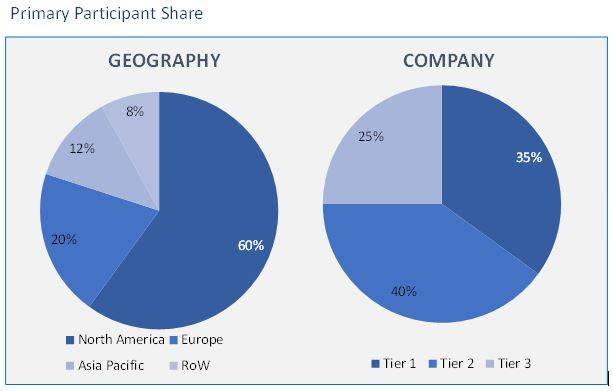Eco Fibres are a form of fibre whose growth doesn’t require the use of chemicals or pesticides. These fibres are disease-free and resistant to mould and mildew. The product mostly consists of hemp, bamboo, ramie, and linen, which produce organic and environmentally beneficial fibre for use in clothing and textiles. Products with breathable, UV- and microbe-resistant qualities have been developed thanks to advanced technologies. Growing demand for textile products for commercial, residential, and garment uses is causing the industry to expand. Additionally, in order to reduce garment waste, textile manufacturers are investing in natural and organic Eco Fibres. Government restrictions on the excessive use of synthetic and man-made fibres have also encouraged the development of bio-based and organic fibres, expanding the market for eco fibres.
The enormous amount of fabric waste generated by rising fashion has sped up the development of fibre technologies to produce more environmentally friendly fibres. This is anticipated to lessen the impact on the environment and open up new market expansion prospects. The majority of natural fibres are comfortable and can be found for less money, which causes a high demand for the product. In both developed and developing countries, cotton is a common natural fibre utilised in a variety of end-use industries. Additionally, there is a growing tendency in manufacturers making efforts to find alternative material sources that could be safer for the environment and more practical for customer use. To have a more sustainable impact on the fashion business, fashion brands are also implementing changes in the supply chain and choosing eco-friendly fibres. This industry has significant potential thanks to the growing trend of using less synthetic fibre.
Research Methodology:
Our insights uses a strong research technique that includes data triangulation based on top-down and bottom-up approaches as well as primary research to validate the projected market sizes. The most reliable published sources and interviews with the appropriate stakeholders were used to gather the data required to estimate the market size and forecast for key segments at the global, regional, and country level.
A market’s growth rate, or CAGR, for a particular forecast period is computed based on a number of variables and how much of an impact they have on the market. These elements consist of market stimuli, market inhibitors, industry difficulties, market and technology advancements, market trends, etc. The primary participants share is given below:

Bio-based Synthetic Fibers Market based on Type:
- Organic Fibers
- Recycled Fibers
- Regenerated Fibers
- Others
Bio-based Synthetic Fibers Market on Application:
- Clothing/Textile
- Household & Furnishings
- Industrial
- Medical
- Others
Bio-based Synthetic Fibers Market based on Geography:
- North America
- US
- Canada
- Europe
- Germany
- UK
- France
- Italy
- Spain
- Rest of Europe (RoE)
- Asia Pacific (APAC)
- China
- Japan
- India
- Australia
- South Korea
- Rest of Asia Pacific (RoAPAC)
- Latin America (LATAM)
- Brazil
- Argentina
- Rest of South America
- Middle East and Africa (MEA)
- UAE
- Turkey
- Saudi Arabia
- South Africa
- Rest of Middle East & Africa
The market is divided into categories for organic fibre, recycled fibre, regenerated fibre, and others based on kind. The fastest increase in the organic fibre market is anticipated between 2021 and 2028, which may be ascribed to shifting customer preferences towards more environmentally friendly goods. According to Textile Exchange, the expansion of the organic fibre market would be driven by the production of organic cotton, which reached 239 KT in 2019. The portion of man-made fibres that are produced from cellulose and sugar comprises synthetic fibres like rayon and lyocell. Due to the low cost and ease of processing of the fibres, this market segment has dominated. Higher sustainability qualities of regenerated fibre, such as comfort and fibre strength, lead to a strong demand for the product.
The segment for recycled fibres includes fibres made from polyester and polyamide trash that have been collected. The segment is being driven by the benefits to the environment and recyclable material. Additionally, from 9% of all PET fibre in 2009 to fourteen percent in 2019, Textile Exchange’s market share for recycled polyester increased. It contains wool, leather, and silk-based fibres. These fibres are all made naturally and have no negative effects on the environment. They have also been applied to textiles for millennia. The expansion of the market is driven by the increased consumer preference for branded, aesthetically pleasing garments composed of wool and silk.
The market is divided into categories for industrial, medical, household & furniture, clothes & textiles, and other applications. The market’s greatest application share was recorded in the clothing/textile category, which may be attributable to the expanding global fashion industry. According to age groups, there is a rising demand for a variety of clothing kinds, including designer apparel, casual wear, and formal dress. The desire among the younger generation to own things from upscale brands in order to stay current with fashion is further fueled by the strengthening economies of several important nations. The material is used to make curtains, table mats, napkins, and covers in the household & furnishings industry. It is projected that the population’s rising demand for these products will fuel category expansion.
In 2020, the market in Asia and the Pacific was worth USD 17.29 billion. Due to its rapid economic expansion, which was aided by its growing population, the region represented the biggest value on the world market. The market in the region is being driven by the increase in demand for fibre from garments and industrial applications. Industries including textile, automotive, and construction are expanding, which is driving up product consumption.
The market in North America is primarily driven by the medical sector, which is helped by technical advancements that allow for the environmentally friendly disposal of medical waste. The market in the area is being driven by efforts to reduce medical waste and create more sustainable products. The manufacture of automobiles, which use fabrics for the interior, handle covers, lining, and seat covers, increased throughout Europe. The use of the fibre and the market in Europe are mostly driven by the expanding automobile industry.
- This report illustrates the most vital attributes of the Bio-based Synthetic Fibers Market, which are driving and providing opportunities.
- This research gives an in-depth analysis of the Bio-based Synthetic Fibers Market growth on the basis of several segments in the market.
- This report presents the predictions of the past and present trends of the Bio-based Synthetic Fibers Market.
- This study also presents the competitive analysis, such as key strategies and capabilities of major players of the Bio-based Synthetic Fibers Market.


